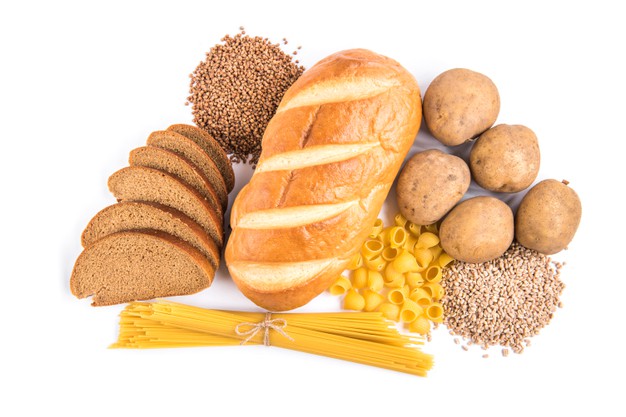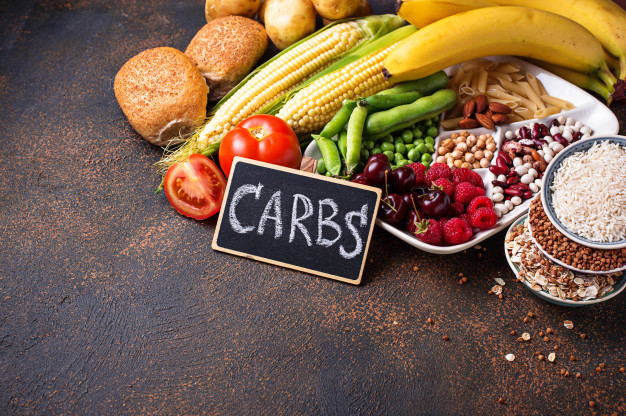Carbohydrates commonly occurred in the form of starches, sugar, and fiber in food. All carbohydrates are made up of molecules of sugar. Sugar molecules are joined together to form fiber and starches.
In the body, sugars and starches are broken down in the digestive system to form glucose. Glucose is the fuel that gives you energy and powers all of the body’s functions. Glucose is also known as blood sugar. Dietary fiber is a type of carbohydrate which is not broken down during digestion. It passes through the small intestine, stomach, colon, and then out of the body.
Scientists and dietitians used to classify carbohydrates into two types: complex carbohydrates and simple carbohydrates. Complex carbohydrates contain starches and fiber. Simple carbohydrates contain sugar that occurs naturally in vegetables, fruits, and milk as well as white sugar, honey, brown sugar, and any sugar added to foods during processing. Today, scientists and dietitians grouped carbohydrates based on their fiber content and ingredients.
Examples of Carbohydrates
Following are the important examples of carbohydrates:
Glucose
Galactose
Maltose
Fructose
Sucrose
Lactose
Starch
Cellulose
Chitin
Functions of Carbohydrates

The main function of carbohydrates is to gives us energy and food to the body and the nervous system.
Carbohydrates are also known as one of the main components of food, including sugars, starch, and fibers which are amply found in grains, fruits, and milk products.
Carbohydrates are also called simple sugars, complex carbohydrates, starch, and so on. It is also involved in fat metabolism and protects from ketosis. It inhibits the breakdown of proteins for energy as they are the primary source of energy. A type of enzyme by the name of amylase assists in the break-down of starch into glucose, finally producing energy for metabolism.
Sources of Carbohydrates

Simple sugars are generally present in the form of fructose in many fruits.
Galactose is found in all dairy products.
Lactose is amply present in milk and other dairy products.
Maltose is found in potatoes, cereal, beer, processed cheese, pasta, etc.
Sucrose is occurring from honey and sugar-containing small amounts of vitamins and minerals.
These simple sugars that must include minerals and vitamins exist commonly in fruits, milk, and vegetables. Several refined and other processed foods like white rice, white flour, and sugar, lack important nutrients, and hence, they are known as “enriched.” It is slightly healthy to use vitamins, carbohydrates, and all other organic nutrients in their natural forms.
What are good carbs and bad carbs?

Good carbs mean foods that include high fiber amounts. Good carbs take a bit more time to be broken down by the body and used for energy. They are found in cereals and whole-grain loaves of bread and products made from whole wheat flour, vegetables, and fruits.
Bad carbs are generally referred to as foods that include refined carbohydrates with a low fiber amount, mainly sugar and white flour. These are found in foods like cakes, white bread, cookies, and other bakery items made with white flour; white rice, and some cereals.
Dividing the carbohydrates into the good carbs and the bad carbs is a simple way to think about good nutrition, but these are not exact scientific terms. When talking about eating a healthy diet, eat high fiber foods, whole grain rather than enriched, low fiber foods.
How much carbohydrate does a person require in a day?
At each time of your meal, half of the plate should be filled with vegetables and fruits and a quarter of the plate should be filled with whole grains. The last quarter part of the plate should be meat, fish, proteins, beans, or nuts.
Conclusion
Carbohydrates are an essential basis of energy for the body. Some categories are more beneficial than others. For example, dietary fiber is a carbohydrate that maintains heart and gut health, whereas extra sugars can steer to a high risk of diabetes, and heart disease.





